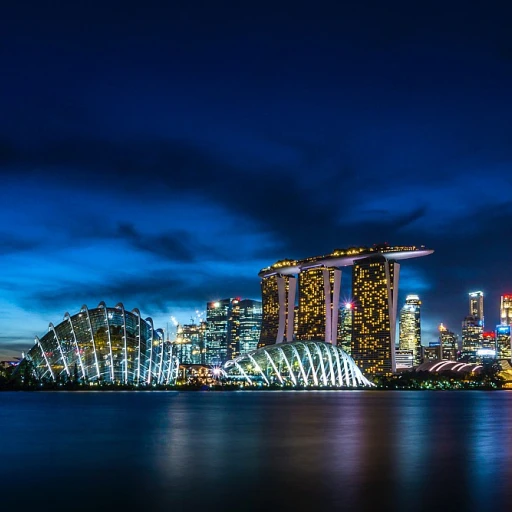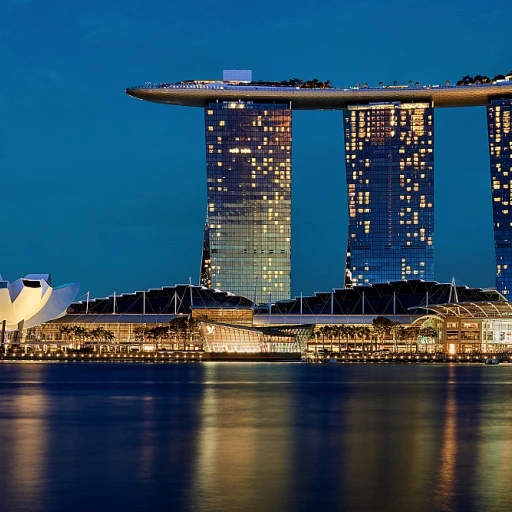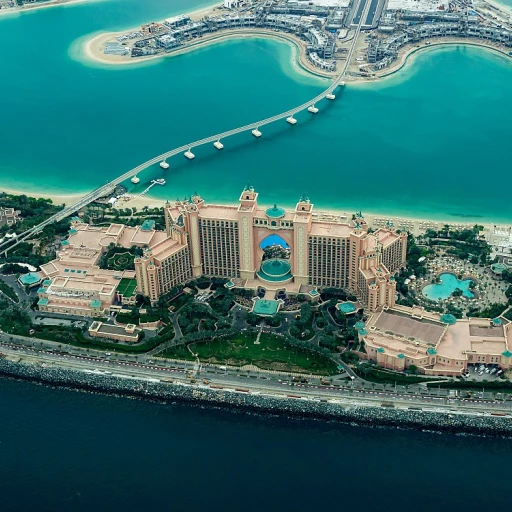The architectural marvels of Chicago
Chicago’s architectural evolution
Chicago, often referred to as the "Windy City," is an architectural gem that stands tall and proud, boasting a skyline like no other. From the towering Willis Tower (formerly Sears Tower) to the elegant Tribune Tower, each building tells a unique story of innovation and design that has left a significant mark on the city. It's not just about size; it's about the structural artistry that makes Chicago’s buildings iconic landmarks recognized worldwide.Chicago, illinois is home to a stunning 1,315 high-rises, with 44 of those towering above 600 feet. The Willis Tower, once the world's tallest for a good 25 years, reaches up to 1,450 feet, excluding its antennas. This iconic skyscraper offers breathtaking views of Lake Michigan and the surrounding cityscape. Another marvel, the John Hancock Center, is renowned for its distinctive X-braced exterior, designed to withstand the city's wind pressures. These structures don't just stand as buildings; they symbolize human creativity and resilience.
Preservation and innovation
Chicago's architectural significance also lies in the blending of old and new. Take, for instance, the meticulous preservation of historic buildings alongside modern constructions. Preservation Chicago, a dedicated organization, works tirelessly to protect these architectural treasures. A shining example is the restoration of the Rookery Building, one of Frank Lloyd Wright’s masterpieces. This effort ensures that significant structures, like the Merchandise Mart and the London Guarantee Building, continue to tell their stories amidst a city continually reaching for the future.Furthermore, the Chicago River plays a crucial role in showcasing the city’s architectural prowess. Various architectural boat tours along the river provide a unique perspective of the city’s skyline—combining history, architecture, and scenic beauty in one grand experience. The tour navigates past iconic structures like the Wrigley Building, Marina City, and the Trump International Hotel and Tower, revealing their stories and significance in shaping the city’s architectural identity.
The emotional impact of the skyline
It’s hard not to feel a mix of awe and inspiration while gazing at the Chicago skyline, whether from the shores of Lake Michigan or the bustling streets below. Beyond being mere concrete and steel, these buildings connect Chicagoans with their city's rich history and vibrant present. The Prudential Building, for instance, evokes memories of post-war optimism, while newer buildings like the Aqua Tower represent modern innovation with its undulating, water-inspired design.Visiting Chicago isn’t just about admiring its height or mass; it’s about experiencing how each structure adds to the city's unique character. Take a walk down Michigan Avenue, and you'll see why this bustling street, with its mix of historic and modern buildings, is a testament to Chicago’s ability to honor its past while embracing the future. Engaging with Chicago’s architectural marvels is akin to flipping through a living history book where each chapter is more fascinating than the last. The city's skyline is not just a set of buildings but a vibrant, living tapestry reflecting the dreams and aspirations of countless visionaries who dared to reach for the skies.
A stroll through Grant Park and Buckingham Fountain
An oasis in the heart of chicago: Grant Park and Buckingham Fountain
Nestled between Lake Michigan and the bustling streets of Chicago, Grant Park is often dubbed as the city's front yard. Spanning over 319 acres, this expansive green space offers Chicagoans and visitors alike a breath of fresh air amidst the urban hustle. What truly sets Grant Park apart is the exquisite Buckingham Fountain, a centerpiece that's not just a marvel but a testament to the city's love for architecture and public art.
Buckingham Fountain: A majestic marvel
Buckingham Fountain, constructed in 1927, is one of the largest fountains in the world. Designed by Edward H. Bennett, the fountain was inspired by the Latona Fountain at the Palace of Versailles. This iconic landmark features a stunning display of water artistry that shoots water up to 150 feet high. The fountain's show runs every hour, on the hour, from 8 a.m. to 11 p.m. during the warmer months, making it a must-see attraction. The fountain's intricate design and grandeur are a testament to Chicago's architectural brilliance.
The green space and events
Grant Park isn't just about the fountain. It's a versatile space that hosts some of the city's most significant events, like the Taste of Chicago and Lollapalooza, drawing crowds from all over the United States. The park's facilities include baseball diamonds, tennis courts, and open spaces for picnics and relaxation, making it a favorite spot for families and sports enthusiasts.
Grant Park's rich history
Grant Park, originally known as Lake Park, has played a crucial role in Chicago's history. It was renamed in honor of President Ulysses S. Grant in 1901. Over the years, it has been a gathering place for historic events, including the 1968 Democratic National Convention protests and President Barack Obama's 2008 election night rally. The park's rich history adds layers of cultural significance to its serene environment.
Connecting to the city's heritage
Exploring Grant Park and Buckingham Fountain not only offers stunning visuals but also a deep connection to Chicago's architectural and cultural heritage. For those looking to dive deeper into the city's rich tapestry, consider visiting the Field Museum or the nearby Art Institute of Chicago.
The historic Lincoln Park and Lincoln Park Zoo
Uncovering Lincoln Park's rich past and present
Let's dive into one of chicago's most vibrant neighborhoods - Lincoln Park. Named after President Abraham Lincoln, this urban oasis offers an extraordinary mix of historical richness and modern charm. Featuring the iconic Lincoln Park Zoo, which hosts nearly 200 unique species, it’s a must-visit for families and animal lovers.
Stepping into Lincoln Park is like hopping into a time machine that shows chicago's evolution. The Lincoln Park Conservatory, for instance, has been around since the 1800s and serves as a botanical treasure trove, preserving rare and exotic plants. Did you know? The famed Lincoln Park Zoo is one of the oldest free zoos in the United States, established in 1868.
The district's architectural gems
The area isn’t just about green spaces; it’s also a hub for architectural aficionados. You’ll come across an impressive collection of row houses and historical buildings that date back to the late 19th and early 20th centuries. The Row House District on Lincoln Avenue showcases classic designs, making it a photographer’s paradise.
Modern elements blend seamlessly with the old. The DePaul University neighborhood, part of the Lincoln Park community, introduces a youthful energy with contemporary buildings and bustling student life. In fact, the university’s significance to the community can’t be overstated, and it's one of the primary catalysts for Lincoln Park's dynamic environment.
A treasure trove of outdoor activities
Lincoln Park's outdoor scene doesn’t disappoint either. From the serene North Pond to the bustling lakefront trails along Lake Michigan, there’s no shortage of scenic spots to explore. Whether it’s a jog, a leisurely stroll, or a bike ride along Lake Shore Drive, the views of the Chicago skyline and Lake Michigan are sure to captivate.
And let’s not forget the Lincoln Park Cultural Center, a gem offering everything from art exhibits to music performances. It’s like a cross-section of Chicago’s rich cultural life squeezed into one area.
Historical markers and controversies
The charm of this district also lies in its history. Historians cite that Lincoln Park’s origins were rather grim, serving as a City Cemetery before it was transformed into a public park. There’s an intriguing narrative involving some of the park’s early controversies, including debates over its conversion which significantly shaped the city’s development.
So, next time you’re in Chicago, spend some quality time soaking in the essence of Lincoln Park. Whether it’s admiring the beautifully preserved structures, enjoying the lush green spaces, or exploring the zoo, Lincoln Park offers a unique and enriching experience.
Exploring the Chicago River and its architectural boat tours
Chicago River's magic: architectural boat tours
Exploring the Chicago River offers a unique perspective of the city's architectural magnificence. Nearly 40 bridges span the river, each with its own story and design, like the iconic Michigan Avenue Bridge and the intricate DuSable Bridge. These bridges provide picturesque views and are an integral part of the city's transport infrastructure.
The Chicago River flows through the heart of downtown, with architecture ranging from the historic Wrigley Building, completed in 1924, to the modernist Trump Tower, adding to the city's diverse skyline. The guided boat tours along the river provide a comprehensive understanding of the architectural styles and historical significance of these buildings.
According to the Chicago Architecture Center, over one million people take these boat tours every year, making it one of the most popular tourist activities in the city (source: Chicago Architecture Center). The architectural boat tours often highlight the evolution of architectural trends, from the early 20th-century skyscrapers to contemporary designs by acclaimed architects like Jeanne Gang and her Aqua Tower.
During a river tour, you'll also learn about the river's crucial role in the city's history, including its reversal in 1900 to solve sanitation issues and prevent waterborne diseases. This engineering feat was a critical turning point in Chicago's environmental and public health history (source: Illinois Environmental Protection Agency).
Whether you're a history buff, an architecture enthusiast, or just love scenic boat rides, the Chicago River tours have something for everyone. They are a testament to the city's resilience, creativity, and relentless drive to innovate.
The cultural significance of Navy Pier
The attraction of chicago's iconic Navy Pier
Navy Pier is a cornerstone of Chicago's cultural landscape, drawing in more than 9 million visitors annually. This 3,300-foot-long pier on the shore of Lake Michigan is more than just a tourist spot; it’s a lively attraction teeming with history and excitement.
Built in 1916 and originally known as Municipal Pier, Navy Pier was intended to serve both commercial shipping and recreational activities. Today, it stands as a symbol of the city’s resilience and spirit. One fascinating anecdote is its use as a training center by the Navy during World War II, which led to its current name.
A hub of entertainment and leisure
From the Centennial Wheel offering breathtaking views of the Chicago skyline and Lake Michigan to the Chicago Children's Museum and the Chicago Shakespeare Theater, there's something to captivate every visitor. Not to forget its seasonal events like the Winter WonderFest that add to its universal appeal.
Paul Durica, a noted local historian, notes, “Navy Pier showcases the rich tapestry of chicago’s history while offering unparalleled recreational facilities. It’s both a reminder of our past and a beacon for the future.”
Food and shopping experiences at Navy Pier
If you’re a foodie or shopping enthusiast, Navy Pier doesn’t disappoint. Enjoy a range of culinary delights from artisanal popcorn at Garrett Popcorn Shops to fine dining experiences at Riva Crabhouse. The pier also features unique shops where you can pick up Chicago-themed souvenirs, local arts, and crafts.
An architectural gem
For architecture enthusiasts, Navy Pier offers a perfect mix of modern and historic - from the grand Aon Grand Ballroom designed by Daniel Burnham to the cutting-edge architectural works of today. You can take architectural tours that detail the evolution of Navy Pier and its impact on Chicago’s urban fabric.
A commitment to preservation
Navy Pier also demonstrates a strong commitment to architectural preservation. The pier has undergone numerous renovations to restore its historic structures while integrating modern amenities. This blend of preservation and innovation makes it an enduring landmark in chicago illinois usa. Discover more about Galveston Island Historic Pleasure Pier tickets in our related guides.
The charm of Chicago's historic districts
The timeless charm of chicago's historic districts
Chicago is not just about loop skyscrapers and booming business avenues; it has a soul rooted deeply in its historic districts. Wander through the North Side, specifically the Old Town Triangle and the Gold Coast, and be prepared to travel back in time. You'll find the iconic Schlitz Brewery tied house, now a local favorite for its distinct brick and terracotta facade, showcasing a slice of the city's brewing heritage. Another marvel is the row house district; these stunning stone and brick homes were once the abode of Chicago's elite. Preservation attempts spearheaded by organizations like Preservation Chicago have ensured these historic gems remain beautifully intact.Exploring the chic and vintage vibes of the historic north avenue district
A leisurely stroll through the Historic North Avenue District unveils the perfect mix of past and present. This area, part of the broader Chicago Landmark district program, showcases preserved gems like the Engine Company Truck House. This is an exquisite example of early 20th-century firehouses, repurposed but with its historic charm preserved. As the urban fabric of Chicago evolves, ensuring these pieces of history remain is essential to retaining the city's identity.The mesmerizing architecture of the lincoln park area
Lincoln Park is more than its zoo or the expansive parkland by Lake Michigan. The district is rich in heritage buildings like the Martin Luther King Drive Baptist Church and the Lincoln Park Zoo, where architecture meets natural beauty. This combination offers a unique view into Chicago's architectural evolution. Residents and tourists alike cherish the seamless blend of these historic landmarks Chicago.The legacy of chicago's architectural preservation efforts
Preservation Chicago stands as a testament to Chicago's dedication towards maintaining its architectural legacy. This commitment is evident in initiatives to preserve structures like the Trust Savings Bank Building. Protecting these landmarks not only honors the past but enhances the city’s skyline and the overall view of Lake Michigan. For anyone keen on exploring the rich history of Chicago Illinois USA, the city's preserved districts offer glimpses of a bygone era, beautifully juxtaposed with modernity.The art and history of the Field Museum and Art Institute of Chicago
Historic districts and charming streets
Chicago is a city where history and modernity coexist in harmony. Its historic districts and charming streets are filled with stories and character that offer a unique perspective on the city's evolution. Let's dive into a few iconic areas that epitomize the spirit of Chicago.One of the most notable historic districts is the Old Town Triangle, located on the North Side of the city. This neighborhood is home to a collection of row houses that showcase diverse architectural styles from the late 19th and early 20th centuries. Literature lovers might recognize it as the home of the Schlitz Brewery Tied House, an architectural gem that has stood the test of time, as well as the Marshall Field Garden Apartments, which offer a glimpse into the city's past.
Then there’s the Prairie Avenue Historic District, which was once known as the “Millionaire’s Row” for its opulent mansions inhabited by Chicago’s elite. Although many of the original buildings have been lost, the district still preserves some significant structures, including the homes of notable figures like Marshall Field and George Pullman. The district’s preservation efforts are spearheaded by organizations like Preservation Chicago, ensuring these historic landmarks tell their stories for years to come.
Lincoln Park is another fascinating area with diverse offerings. Visitors flock to the Lincoln Park Zoo, one of the oldest zoos in the United States, and the surrounding Lincoln Park neighborhood features historic row houses and green spaces that offer a peaceful retreat from the bustling city life. Lincoln Avenue, with its iconic charm, is a perfect blend of history and modern-day vibrance, ensuring every visit is memorable.
Another gem is the Gold Coast Historic District, renowned for its luxurious homes and historic buildings. Strolling down the tree-lined streets of this district, one can view architectural masterpieces from a bygone era, including the Charnley-Persky House designed by Louis Sullivan and Frank Lloyd Wright. The district is steeped in a rich history that continues to attract historians and tourists alike.
And let’s not forget the Pullman Historic District, a neighborhood that captures the essence of Chicago’s industrial past. Established by the Pullman Company for its workers, this district offers a unique view into the city's labor history and the impact of the railroads on its development. Its fascinating history is commemorated through preserved buildings and museums that narrate the story of the town and its people.
Chicago’s historic districts are hidden treasures that provide a unique window into the city’s storied past. Whether you’re wandering through the old row houses or discovering the architectural marvels of the “Millionaire’s Row”, these districts promise an enriching experience that blends history with modern-day charm.
The significance of religious landmarks in Chicago
Chicago's sacred structures: a look at religious landmarks
Chicago isn't just about towering skyscrapers and bustling streets. The city's religious landmarks offer a glimpse into its rich cultural and spiritual tapestry. From graceful churches to magnificent synagogues, these landmarks are more than just places of worship—they are historical treasures that tell tales of Chicago's diversity.
One of the most significant religious sites in Chicago is the Holy Name Cathedral. Nestled in the heart of the city, this Gothic Revival masterpiece stands out with its ornate design and stunning stained-glass windows. Founded in 1874, it remains the center of Catholic life in the city. According to Preservation Chicago, the cathedral attracts thousands of visitors each year, both faithful and tourists alike.
The Pilgrim Baptist Church, another gem, is not just a place of worship but also a symbol of resilience. Designed by the famed architectural duo Dankmar Adler and Louis Sullivan in 1890, the church is often hailed as the birthplace of gospel music. Despite suffering a devastating fire in 2006, efforts to restore this landmark continue, highlighting its importance to the community and its historic significance.
Head over to the North Side, and you'll find the Anshe Emet Synagogue. This Reform Jewish congregation was established in 1873 and boasts a beautiful Byzantine-style building. It's a serene place, where the history of Jewish migration and settlement in Chicago comes to life. It remains a vibrant center for Jewish cultural and religious activities.
Meanwhile, the Second Presbyterian Church, located on South Michigan Avenue, is a stunning example of Gothic Revival architecture. It’s known for its breathtaking interior adorned with Tiffany stained-glass windows. Built in 1874, the church has been designated a Chicago Landmark and listed on the National Register of Historic Places.
A stroll through the historic district of Lincoln Park would be incomplete without a visit to the St. James Chapel. This small, beautiful chapel is part of the Archbishop’s residence and offers a tranquil retreat from the hustle of the city. Its remarkable architecture and serene environment make it a must-visit for any ardent lover of ecclesiastical buildings.
Then there's the St. Adalbert’s Church, one of the oldest Polish parishes in the city. Established in 1873, this Roman Catholic Church is a testament to the vibrant Polish community in Chicago. The church, with its towering spires and magnificent interior, reflects the deep-rooted faith and culture of its congregants.
Even the First United Methodist Church at the Chicago Temple, the oldest church in Chicago, has its own stories to tell. Built in 1831 and known for its sky-high steeple, it stands proudly amidst modern skyscrapers, a beacon of faith and history.
In essence, these religious landmarks offer a tranquil retreat and a deeper understanding of Chicago's rich heritage. They connect the present to the past, reminding us of the city’s diverse cultural and spiritual roots.




-large-teaser.webp)





-large-teaser.webp)

